Are you tired of getting unevenly cooked rice from your rice cooker? Do you want to know the key to getting perfectly cooked, fluffy rice every time? The secret is to soak your rice before using the rice cooker.
Soaking your rice before using a rice cooker may seem like an extra step, but it can make all the difference in the texture and taste of your rice. In this article, we will discuss the benefits of soaking rice before using a rice cooker, best practices for soaking, optimal soaking times, and troubleshooting common rice cooking issues.
Key Takeaways:
- Soaking rice before using a rice cooker can improve the texture and taste of your rice.
- Best practices for soaking rice include using the right amount of water, covering the rice, and soaking for an optimal amount of time.
- Common rice cooking issues can be solved through proper soaking and preparation techniques.
Preparing Rice for the Cooker
Preparing rice for your rice cooker is a crucial part of achieving perfectly cooked rice every time. One of the best ways to prepare your rice is to soak it before cooking.
So, how do you prepare rice for a rice cooker?
First, rinse the rice thoroughly in water to remove any excess starch. Then, place the rice in a bowl and fill it with enough water to cover the rice by about an inch. Let the rice soak for at least 30 minutes, but ideally for a few hours. This soaking process helps to remove excess starch and any debris that may be lingering on the grains. It can also help improve the texture and flavor of the rice.
When you’re ready to cook the rice, drain the water and add the rice to the rice cooker with the recommended amount of water for your specific rice cooker. Follow the instructions for your rice cooker to ensure perfectly cooked rice every time.
Looking for more rice soaking tips for better cooking?
Consider adding a pinch of salt to the soaking water to enhance the flavor of the rice. You can also add other ingredients, like herbs or spices, to the soaking water to infuse the rice with additional flavor. Additionally, if you’re a fan of fluffy rice, consider using less water when cooking. This can help create more separation between the grains and give your rice a lighter texture.
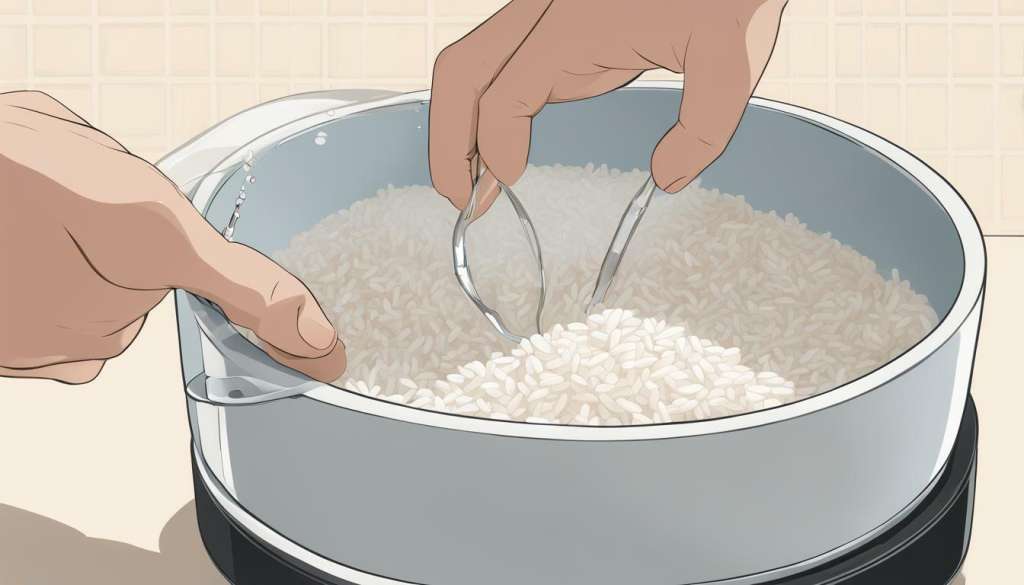
Overall, taking the time to properly prepare your rice before using a rice cooker can lead to more flavorful and perfectly cooked rice. So, next time you’re getting ready to make a batch of rice in your rice cooker, don’t forget to soak the rice first!
Benefits of Soaking Rice
Soaking rice before using a rice cooker may seem like an unnecessary extra step to some, but it can have several benefits that make it worth the effort. Here are some reasons why you might want to consider soaking your rice:
- Better texture: Soaked rice tends to have a fluffier and more even texture than rice that has not been soaked. This is because soaking allows the grains to absorb water more evenly and cook more thoroughly.
- Shorter cooking time: When you soak rice, it can reduce the overall cooking time by up to 20 percent. This is because the grains have already absorbed some of the water, so they require less time to cook through.
- Improved digestibility: Soaking rice can also make it more digestible by breaking down some of the complex starches that can be difficult for our bodies to process. This can be especially helpful for individuals with digestive issues.
- Enhanced flavor: Soaking rice can also enhance the flavor of your dish by allowing the grains to fully absorb any added seasonings or spices. This can result in a more flavorful and delicious meal.
Overall, soaking rice before using a rice cooker can be a simple yet effective way to improve the quality of your dish. Experiment with different soaking times and techniques to find the method that works best for you.
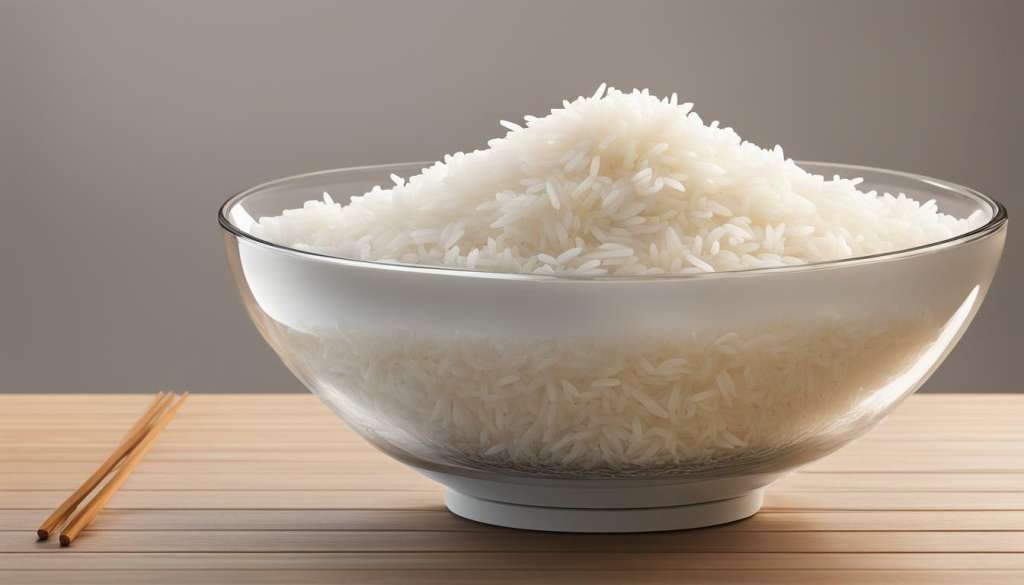
Soaking Best Practices
When it comes to soaking rice before cooking in a rice cooker, there are a few best practices to keep in mind.
First, always rinse your rice thoroughly before soaking to remove any excess starch. Then, use a large bowl or container to allow for plenty of water to cover the rice. A general ratio is two cups of water for every cup of rice.
Next, cover the container with a lid or plastic wrap and let the rice soak for at least 30 minutes. However, the optimal soaking time can vary depending on the type and quality of rice being used. For example, white rice typically requires less soaking than brown or wild rice.
It’s also important to consider the temperature of the water used for soaking. Using cold water can help prevent the rice from breaking or becoming too mushy, while using lukewarm water can speed up the soaking process. Avoid using hot water as it can cause the rice to cook unevenly.
After soaking, drain the rice thoroughly and transfer it to the rice cooker. The rice cooker will then take care of the cooking process, resulting in perfectly cooked rice every time.
By following these best practices for soaking rice before using a rice cooker, you can ensure that your rice comes out perfectly cooked and delicious.
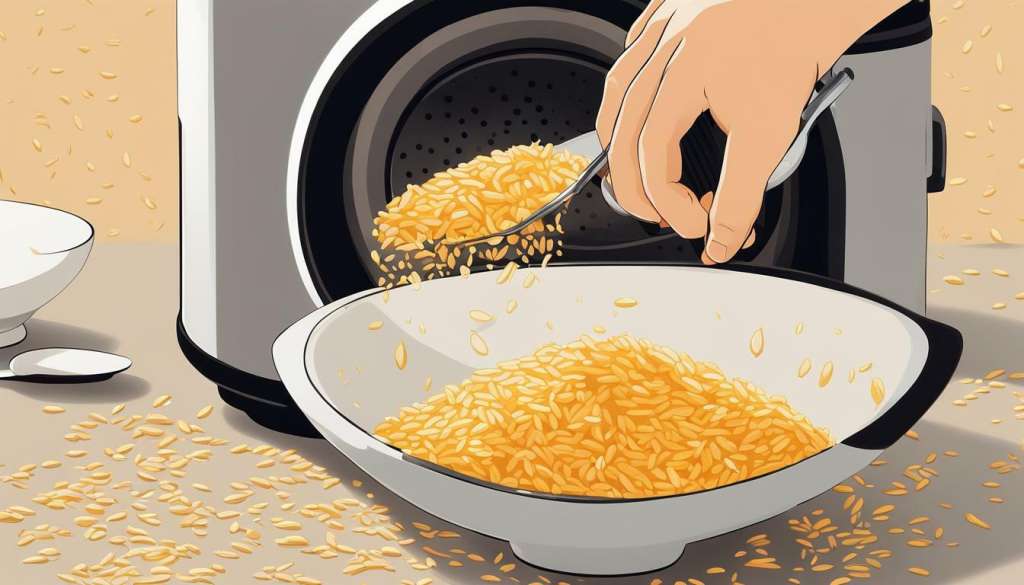
Time for Soaking: Finding the Sweet Spot
So, you now know that soaking rice is important before using a rice cooker. But how long should you soak it for? The answer can vary depending on multiple factors, including the type of rice, the age of the rice, and personal preference.
As a general rule of thumb, soaking rice for around 30 minutes to an hour should suffice for most types of rice. However, some types of rice, such as brown rice, may require longer soaking times. You can experiment with different soaking times to find the sweet spot for your favorite type of rice.
Keep in mind that soaking rice for too long can result in soggy, overcooked rice. On the other hand, if you don’t soak it long enough, the rice may end up undercooked and hard. It’s all about finding the balance.
| Type of Rice | Recommended Soaking Time |
|---|---|
| White Rice | 30 minutes to an hour |
| Brown Rice | 2 to 3 hours |
| Wild Rice | 4 to 6 hours |
Remember, soaking rice before using a rice cooker can enhance the texture and flavor of your rice. You don’t want to skip this important step!
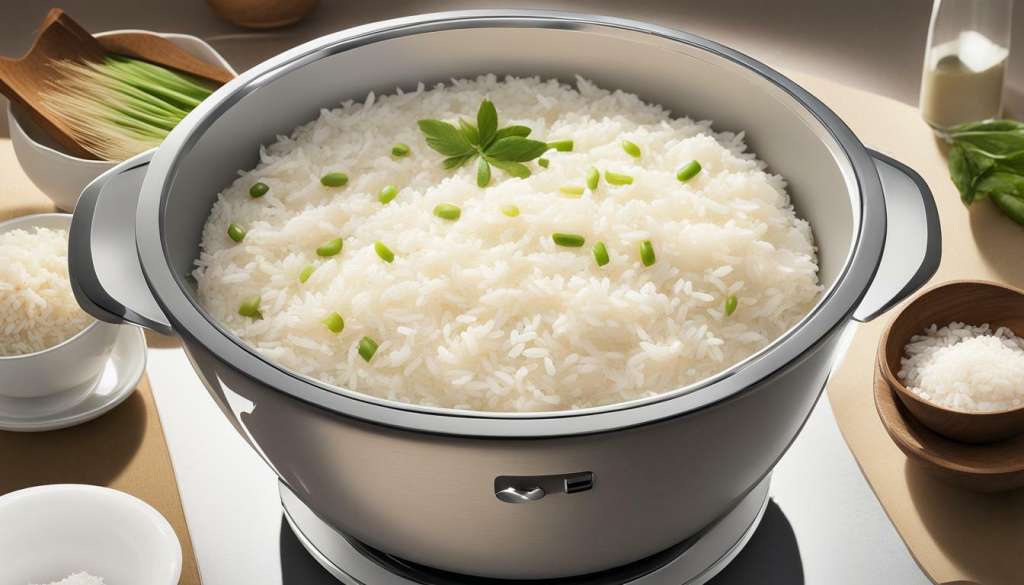
Enhancing Rice Texture
Soaking rice before using a rice cooker not only helps improve the flavor but also enhances the texture of the rice. The process of soaking rice helps the grains absorb water evenly, providing for a fluffier, softer, and more delicate texture. Rice that has not been soaked can sometimes be hard and tough, which can be unpleasant to eat.
The key to achieving the perfect texture of rice is to ensure that you soak it for the optimal time. Typically, soaking rice for 30 minutes before cooking should be sufficient. However, certain types of rice might require longer soaking times, so it’s best to experiment and find the sweet spot for your preferred variety.
Another factor that contributes to the texture of rice is the ratio of water to rice. Be sure to follow the instructions on your rice cooker for the most appropriate ratio, as using too much water can cause the rice to become mushy, while too little can cause it to come out tough.
Additionally, using high-quality rice can also make a big difference in texture. High-quality rice has a higher starch content, which helps create a creamier texture. So, when it comes to soaking rice, be sure to use the best quality rice you can find to achieve the perfect texture.
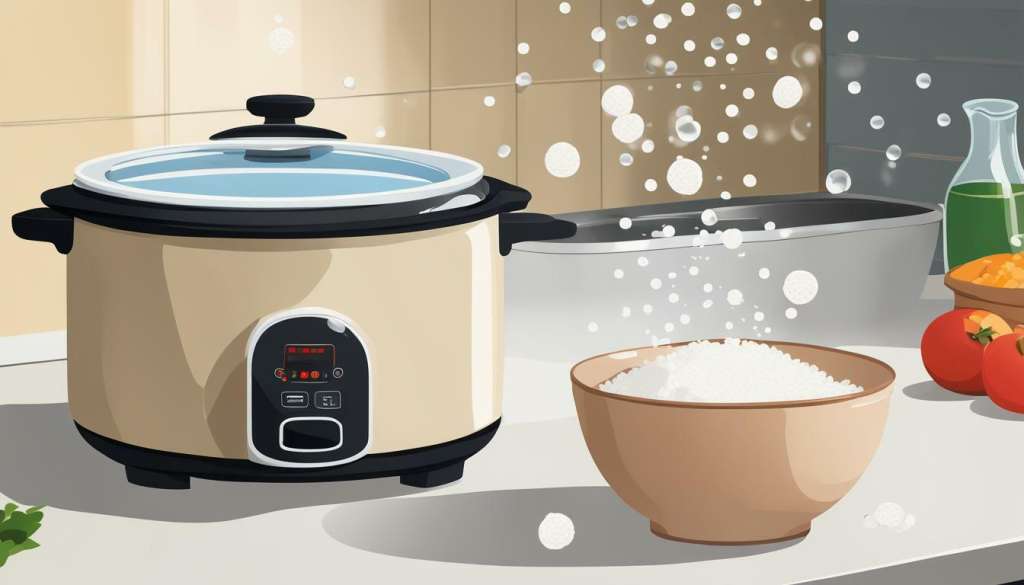
Soaking rice before cooking has been my go-to method for years! It makes a world of difference when it comes to texture and taste. The rice comes out perfectly fluffy and soft, just the way I like it.” – Maria L.
Why Soak Rice Before Using a Rice Cooker?
Rice, being a staple in many households, is a versatile and easy-to-cook food. One may wonder why anyone would soak rice before using a rice cooker? The answer is simple, soaking rice before using a rice cooker has many benefits.
First and foremost, soaking rice gives it a better texture after cooking. The rice grains absorb water and become plump and tender. This leads to fluffy and perfectly cooked rice, without it being too hard or too soft.
Soaking rice also saves time and energy. Soaking rice reduces the cooking time, as softened rice cooks faster than unsoaked rice. This also saves energy as the rice cooker takes less time to cook soaked rice compared to unsoaked rice.
Another benefit of soaking rice is that it removes excess starch from the rice. This results in less sticky and clumpy rice, which is perfect for dishes that require individual rice grains, such as fried rice or biriyani.
Moreover, soaking rice makes it more nutritious. Soaking activates enzymes in rice that make it easier to digest, and also removes phytic acid, which can inhibit the absorption of nutrients in the body.
In conclusion, soaking rice before using a rice cooker has many benefits, including improved texture, time and energy savings, less sticky rice, and better nutrition. Take the time to soak your rice before cooking and enjoy perfect rice every time.
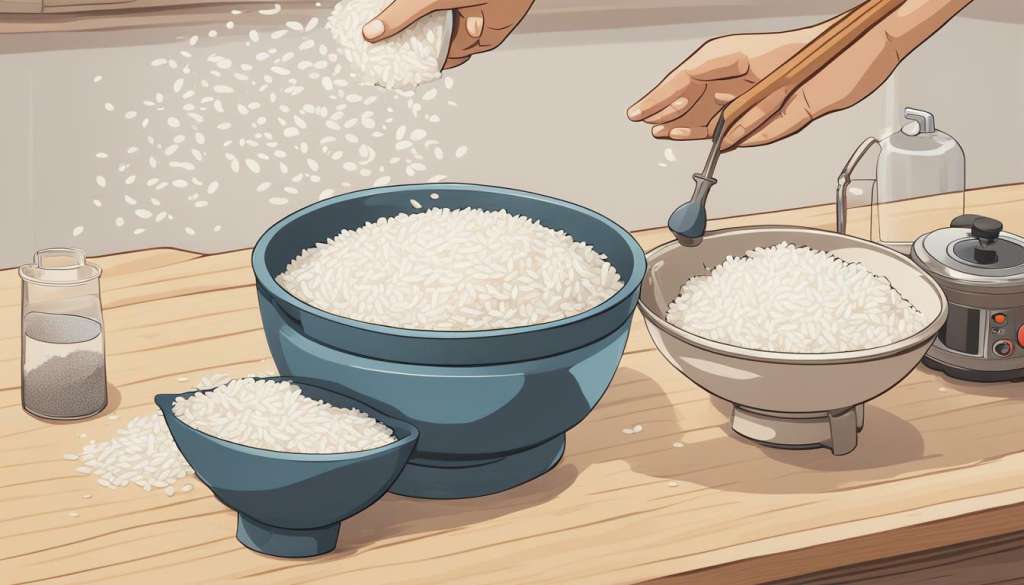
Troubleshooting Common Rice Cooking Issues
Rice cookers make cooking rice a breeze, but sometimes issues can arise. Here are some common problems and their solutions: Some common problems with rice cookers include rice sticking to the bottom of the pot, the rice being too dry or too wet, and the rice taking longer than expected to cook. To prevent rice from sticking, be sure to rinse it thoroughly before cooking. For dry rice, try adding a little bit more water and for wet rice, reduce the amount of water used. To speed up cooking time, consider soaking the rice for 30 minutes before cooking. If you’re looking for a simple bean and rice cooker recipe, try adding a can of black beans, a cup of rice, a tablespoon of chili powder, and two cups of vegetable broth to the cooker and cook as usual.
| Problem | Solution |
|---|---|
| Rice is too hard | Try adding more water and letting the rice cook for a longer time. Also, make sure you are using the correct amount of rice and water ratios. |
| Rice is too soft or mushy | Use less water and/or reduce the cooking time. Also, make sure you are not lifting the lid too often while the rice is cooking, as this can release steam and affect the cooking process. |
| Rice is burnt or stuck to the bottom of the cooker | Make sure you are using the correct amount of water and not cooking the rice for too long. Also, avoid using high heat settings and make sure the rice is evenly distributed in the cooker before starting the cooking process. |
| Rice is not cooked evenly | Stir the rice before starting the cooking process, and make sure it is evenly distributed in the cooker. Also, consider soaking the rice beforehand for more consistent cooking. |
If you continue to experience issues despite troubleshooting, refer to your rice cooker’s manual or contact the manufacturer for further assistance.
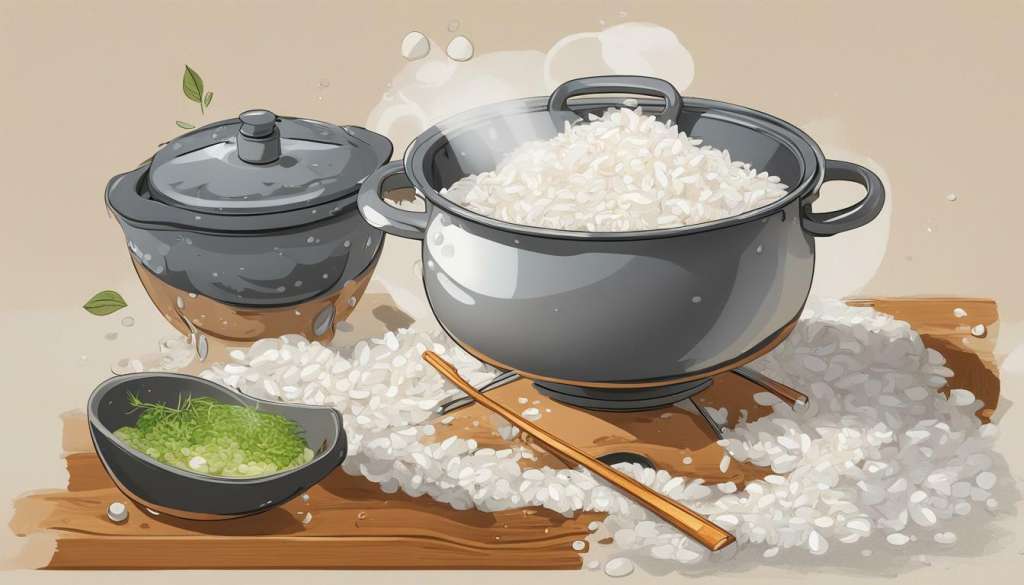
Tips for Flavorful Rice Using a Rice Cooker
Using a rice cooker is a convenient and easy way to make rice, but sometimes the flavor can fall short. Here are some tips to make sure your rice turns out delicious and flavorful every time.
1. Use Broth Instead of Water
For an extra boost of flavor, use broth instead of water when cooking your rice. Chicken or vegetable broth can add depth and richness to your rice, and it’s a simple way to take your dish to the next level.
2. Add Herbs and Spices
Another way to add flavor to your rice is to add herbs and spices during the cooking process. Try adding garlic, ginger, or turmeric for a savory twist, or add cilantro or parsley for a fresh and flavorful taste.
3. Toast Your Rice Before Cooking
Toasting your rice before cooking can bring out its nutty and aromatic flavors. Simply add your rice to a dry pan and heat it over medium-high heat for a few minutes until it starts to turn golden brown. Then, add it to your rice cooker with the recommended amount of water or broth and cook as usual.
4. Add Some Fat
Adding a small amount of fat, like butter or olive oil, to your rice cooker can help to enhance the flavor and texture of your rice. It can also help to prevent the rice from sticking to the bottom of the pot.
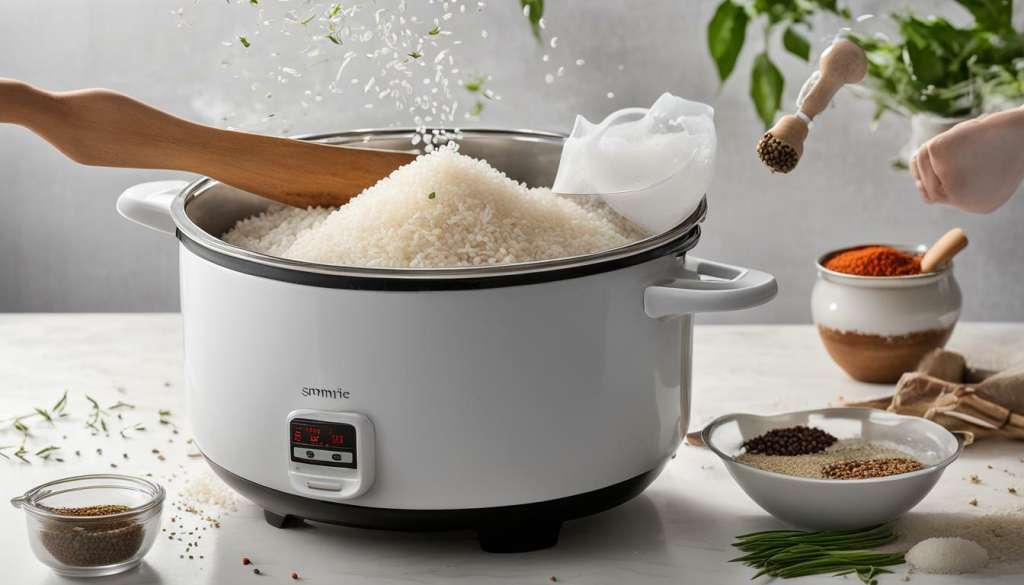
5. Stir in Some Cheese
If you want to add some creaminess and richness to your rice, try stirring in some cheese during the cooking process. Parmesan cheese is a popular choice for adding flavor to rice, but you can also try cheddar, mozzarella, or any other type of cheese that you like.
6. Mix in Some Veggies
Adding vegetables to your rice can not only add flavor, but it can also make your dish more nutritious. Try adding diced onions, carrots, bell peppers, or any other vegetables that you enjoy.
By following these tips, you can create rice dishes that are bursting with flavor and that will impress your guests. Experiment with different flavors and ingredients to find what works best for you and your family.
Tips for Flavorful Rice Using a Rice Cooker
Using a rice cooker to prepare rice may seem like a straightforward process, but there are several tips and tricks that can help elevate the flavor and texture of your rice. Here are some tips for preparing flavorful rice using a rice cooker:
1. Use quality rice
The quality of rice can significantly impact the taste and texture of your final dish. Choose high-quality rice, such as jasmine or basmati, for a more flavorful and aromatic rice.
2. Rinse the rice
Rinsing the rice before cooking can help remove excess starch and prevent clumping. Rinse the rice under cold running water until the water runs clear, then drain well.
3. Add flavorings
Adding herbs, spices, or broth to the rice cooker can infuse the rice with extra flavor. Try adding garlic, ginger, or a bay leaf to the water before cooking.
4. Use the right amount of water
Using the correct amount of water is crucial for cooking rice in a rice cooker. Follow the instructions for your specific rice cooker model, or generally, use a ratio of 1 1/2 cups of water for every cup of rice.
5. Let the rice rest
After the rice has finished cooking, let it rest for 5-10 minutes before fluffing with a fork. This will allow the rice to finish steaming and absorb any excess moisture, resulting in a fluffy and flavorful dish.
Follow these tips to prepare delicious and flavorful rice using a rice cooker. With a little experimentation and creativity, you can create a variety of mouth-watering dishes that are sure to please your taste buds!
FAQ
Q: Soak Rice Before Rice Cooker
A: Soaking rice before using a rice cooker can help improve the texture and taste of the cooked rice. It allows the grains to absorb water evenly, resulting in fluffier and more flavorful rice.
Q: How to Prepare Rice for Rice Cooker
A: To prepare rice for a rice cooker, start by rinsing the rice under cold water to remove any excess starch. Then, place the rice in a bowl and cover with water. Let it soak for about 30 minutes before transferring it to the rice cooker.
Q: Benefits of Soaking Rice
A: Soaking rice before using a rice cooker has several benefits. It helps to remove any impurities or debris from the grains, improves the texture and consistency of the cooked rice, and allows for better absorption of flavors and seasonings.
Q: Soaking Best Practices
A: When soaking rice for a rice cooker, it’s best to use cold water and let the rice soak for at least 30 minutes. Avoid soaking rice for too long as it can become mushy. Additionally, make sure to rinse the rice well before soaking to remove excess starch.
Q: Time for Soaking: Finding the Sweet Spot
A: The optimal soaking time for rice before cooking in a rice cooker is generally around 30 minutes. However, you can adjust the soaking time based on personal preference. It’s best to experiment with different soaking times to find the perfect balance of texture and flavor.
Q: Enhancing Rice Texture
A: Soaking rice before using a rice cooker can help enhance the texture of the cooked rice. It allows the grains to absorb water evenly, resulting in a fluffier and more tender texture. Additionally, soaking can help prevent the rice from becoming sticky or clumpy.
Q: Why Soak Rice Before Using a Rice Cooker?
A: Soaking rice before using a rice cooker helps to improve the overall quality of the cooked rice. It enhances the texture, allows for better flavor absorption, and helps to remove any impurities from the grains. Soaking also helps to ensure that the rice cooks evenly and results in a delicious and satisfying dish.
Q: Troubleshooting Common Rice Cooking Issues
A: Some common rice cooking issues include rice sticking to the bottom of the pot, unevenly cooked rice, or rice that is too dry or mushy. To troubleshoot these issues, make sure to follow the recommended soaking and cooking instructions for your rice cooker. Adjust the water-to-rice ratio or cooking time as needed, and avoid opening the rice cooker lid during the cooking process to maintain consistent heat.
Q: Tips for Flavorful Rice Using a Rice Cooker
A: To make flavorful rice using a rice cooker, try adding spices, herbs, or bouillon cubes to the water before cooking. You can also enhance the taste by substituting water with vegetable or chicken broth. Additionally, consider adding diced vegetables or cooked meat to the rice for added flavor and texture.


